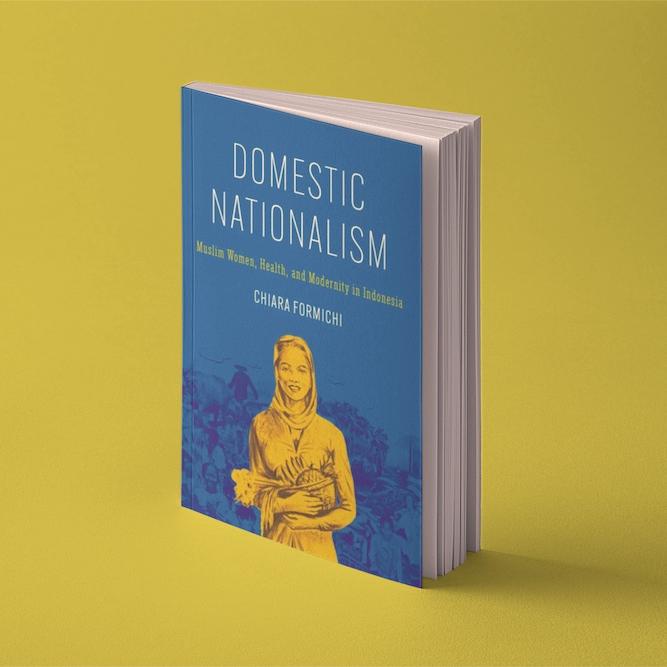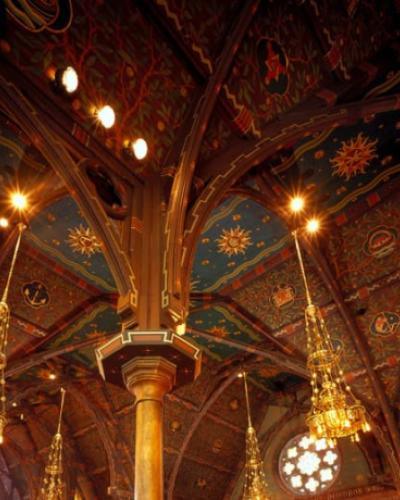The History of Religious Life in Imperial China
(RELST/HIST 2208, ASIAN 2251) MW 2:45-4, 4 credits
In this course we will learn about the rich varieties of religious life in imperial China, focusing on major historical transformations between the tenth and sixteenth centuries. We will investigate the organization of pantheons and human relations with the divine, and consider how they might illuminate social relations. We will examine the ways in which religious rites and festivals helped to constitute social groupings such as families, communities, sects, and states. We will consider the roles of texts, theatrical performances, and clergy in transmitting and transforming understandings of the human, natural, and divine worlds. Finally, we will explore the spatial organization of the sacred in bodies, things, sites, and landscapes.
Vanishing Worlds: Religious Reflections on the Climate Crisis, Mass Extinction & Ecosystem Collapse
(JWST/ASIAN 2257) TR 11:25-12:40, 3 credits
We are living in a period of mass extinctions of animals, insects, plants and mega-flora (trees) and widescale climate disruption. Our paradigms for making sense of what is being called "the great unravelling" are inadequate. In this course, we explore how various religious traditions have regarded the possible sentience of the non-human world and how discourses of apocalypse, cycles of dissolution and renewal, and stewardship, conservation and interdependence shape the ways religious people are responding to this emerging reality of unraveling ecosystems. We examine how protest movements have incorporated religious symbolism and actions. The goal of this course is to explore the ways that people relate to these realities at the level of what it means to be a human being in this moment. How are religious traditions responding to these emerging crises? How do traditions draw on existing paradigms and in what ways do religious communities address the dissonance when existing systems of understanding fail to account for the current realities? How do religious traditions offer moral imperatives for addressing these issues?
The Law in Jewish History
(RELST/HIST/JWST 2853) MW 2:45-4, 4 credits
Before Jewish politics, Jewish identity and Jewish philosophy, there was Jewish law. No other institution is more important to the history of Judaism and to the Jewish way of life. In this lecture course, we will explore the ways in which legal thought and legal discourse shaped Jewish experience and expression between the biblical age and the computer age. We will discover how the cultural meaning of law changed over time, how legal concepts shaped Jewish belief and Jewish behavior, and how the study of Jewish legal sources contributed to the emergence of modern constitutional thought in the Atlantic world.
Dying for God: Judaism, Christianity and the Meaning of Martyrdom
(RELST/HIST/JWST 4742, 6742) W 7:30-9:25 p.m. 4 credits
Martyrdom is one of the most troubling legacies of monotheistic belief. The idea and the practice of martyrdom remain with us, despite the inroads of secularization into every other aspect of Judaism and Christianity. Thanks to the global reach of mass media, martyrs continually intrude upon our consciousness. The willingness to make the ultimate sacrifice inspires, enrages and terrifies us. Where did this controversial ideal originate and why has it gained such enormous cultural power? This course examines the beginnings of martyrdom in the ancient Mediterranean, the cradle of Christianity and rabbinic Judaism. Looking closely at the historical context - the intellectual, social and political developments — that gave rise to the iconic figure of the martyr in the world of late antiquity, we will explore how men and women came to embrace the opportunity of "dying for God," and why the cult of martyrdom became a public institution. Ancient people viewed the spectacle of martyrdom with an equal measure of admiration and alarm; looking closely at evidence of their ambivalence, we will gain some perspective on our own mixed feelings about this deeply disconcerting phenomenon.
Natural History of Religion
(RELST/JWST/NES 4767, 6767) T 9:05-11, 4 credits
How does nature and the environment shape religious traditions? And what impacts do religious thought and practice have on the environment? These two questions are at the heart of this seminar in which we will explore the many relationships between religion and the environment throughout history and in our present time. Water, weather, trees, stones, fire, mountains, deserts, and animals are some of the ecological features we will discuss in connection with religious traditions across time and space. Readings will include scriptural texts from world religions, archival sources like historical newspapers and documents, and ancient and modern poetry and fiction in dialogue with writings by eco-critics, environmental historians, and naturalists. Material culture will also be important for our work together.





